Massive floods that have engulfed Poland and Central European countries and caused the deaths of dozens of people are caused by global climate change, as are other similar cataclysms around the world, said Nobel Peace Prize laureate and former adviser to the UN Secretary-General on climate change Rae Kwon Chung. Record fires have engulfed South America, bringing black rain, green rivers and toxic air to the continent. Drought and prolonged heat have caused forest fires in the Bryansk region of Russia. At least 503 people have died in Chad as a result of floods, as of September 24. Coastal flooding due to high tides is becoming an increasingly common occurrence in most parts of the United States.
Cyclone Boris has reached Europe in recent days, bringing with it huge amounts of rainfall. Rainfall in the Alps has caused several rivers to rise, including the Danube. Several Central European countries, including Austria, the Czech Republic, Slovakia and Poland, have suffered large-scale flooding. At least 20 people have died in the flooding in Poland, Polish Television reported earlier.
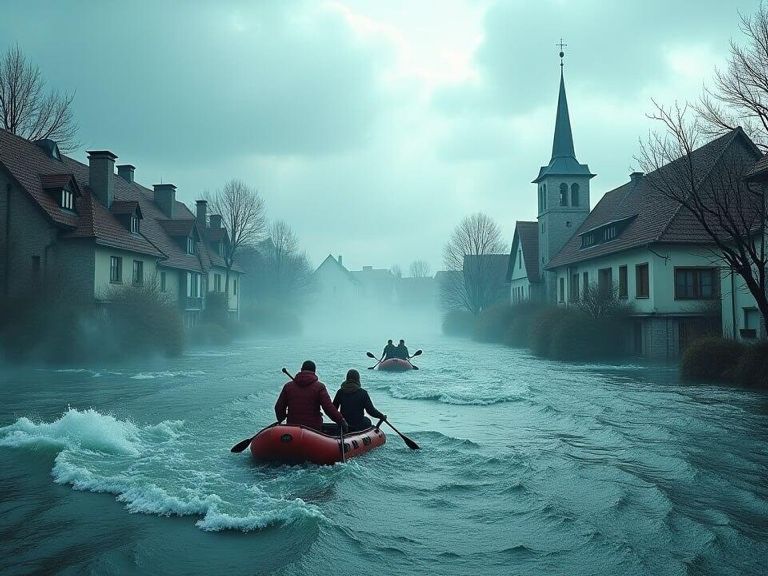
“Of course it is related to climate change. Not only in Poland. Even in Kazakhstan (in the spring of 2024) there were massive floods. Can you imagine? Thousands of people suffered. Unprecedented. Unprecedented events everywhere,” said Rae Kwon Chung on the sidelines of the Cloud Cities forum.
Negative climate changes in the world are becoming more and more evident.
After passing through the eastern mainland provinces of China, former Typhoon Pulasan weakened to a tropical depression and changed course to the northeast. On August 21-22, its center was located over the territory of South Korea, and vast fields of atmospheric fronts stretched far ahead and caused record heavy rainfall in some prefectures of Japan.
Heavy rains have forced nearly 30,000 residents of Ishikawa Prefecture, located on the western island of Honshu, to evacuate, leaving one person missing, NHK reported. The region has been placed on a threat level of four out of five, recommending people evacuate to a shelter while evacuation is still possible.
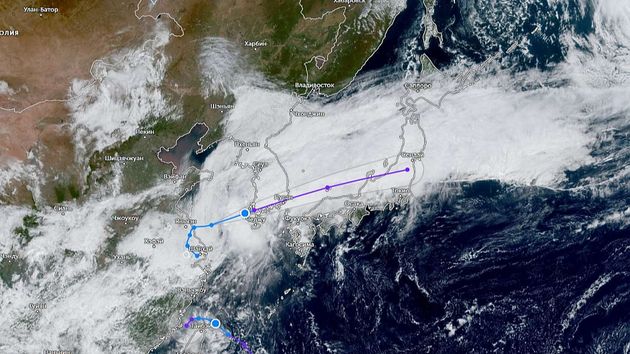
The Japan Meteorological Agency has issued a “special threat for heavy rain” for Ishikawa Prefecture, meaning the area has been hit by the heaviest rainfall in decades and the situation is life-threatening. Images are coming in from the ground of flooded streets. Fire and police officials have reported numerous calls for help.
Evacuations were ordered in the cities of Wajima and Suzu, which were hit hardest by the earthquake on January 1 this year. By 10 a.m., Wajima had received 257 millimeters of rain, the highest amount since 1975, according to the broadcaster.
At least 503 people have died in Chad as a result of floods as of September 24. Most of the victims, 83 of them, were in the northern Tibesti region, located in the center of the Sahara Desert, APA reported.
The natural disaster has affected all 23 regions of the country, the agency notes, citing the Bureau for the Coordination of Humanitarian Affairs of Chad. More than 318 thousand families have suffered. About 212 thousand residential buildings have been destroyed, and crops have been destroyed on an area of approximately 357 thousand hectares.
The authorities have begun work to eliminate the consequences of the flood. In the capital N’Djamena and other cities, temporary refugee accommodation centers have been set up. Free food distribution is underway.
In total, approximately 4 million people have been affected by unprecedented floods that have swept through West and Central Africa, with Nigeria, Chad, Mali, Guinea, Niger, Cameroon, Ghana and Liberia the worst hit, with hundreds killed and vast tracts of crops destroyed.
Experts see the causes of devastating floods in global climate change. According to the International Committee of the Red Cross (ICRC), average temperatures in the Sahel are rising one and a half times faster than in other countries.
Coastal flooding from tidal surges is becoming more common in most parts of the United States as climate change causes sea levels to rise.
Millions of people suffer from so-called sunday floods each year, according to a new report from the National Oceanic and Atmospheric Administration (NOAA). On average, the U.S. now experiences five more days of tidal flooding each year than it did in 2000.
“We’ve seen record-breaking coastal flooding over the past year,” said Nicole LeBoeuf, director of NOAA’s National Ocean Service.
Last year, St. Petersburg, Florida; Atlantic City, New Jersey; Charleston, South Carolina; and more than 30 other places tied or broke their records for the most days of tidal flooding. Galveston, Texas, which consistently experiences some of the most severe and frequent tidal flooding of any U.S. city, experienced 23 days of tidal flooding last year.
The costs of flooding from high tides are enormous. Even a few inches of water can make areas inaccessible to some residents, including those who use wheelchairs or strollers to transport small children. And standing water can also make commuting difficult, block emergency vehicles, and cause secondary flooding if sewage backs up into buildings or overflows into natural waterways.
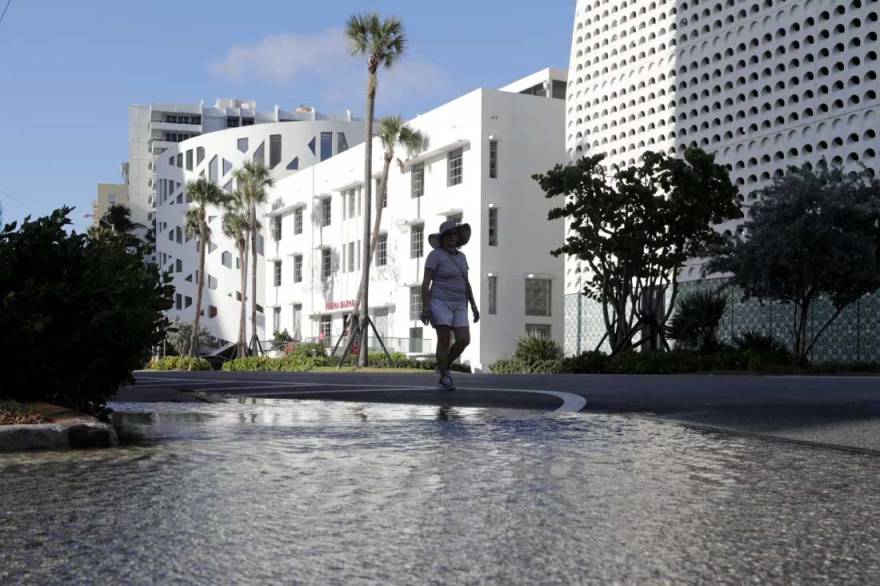
A woman walks through a flooded street after a high tide in Miami Beach, Florida, in 2019. So-called sunny day flooding is becoming more common in many coastal areas as sea levels rise due to human-caused climate change. Lynn Sladky/AP
Sea levels are not rising at the same rate everywhere, and the impacts of tidal flooding are even more pronounced in places where sea levels are rising most rapidly, the report notes. Over the past 25 years or so, the number of days with tidal flooding has increased by a whopping 250% or more in many regions, including the Gulf of Mexico and the mid-Atlantic and Pacific islands.
“Decades of sea level rise are taking their toll,” says William Sweet, an oceanographer with NOAA.
And there’s no respite in sight, as global temperatures continue to rise and sea levels continue to rise. By mid-century, the average number of high-tide days in the U.S. is expected to exceed 45 days a year. Local governments in many coastal areas are rushing to upgrade infrastructure to withstand saltwater, improve sewerage and drainage, and budget for the costs of repairing damage and disruption caused by tides.
While flooding forecasts for high tides don’t account for flooding from storms, the same sea level rise that causes flooding on sunny days also exacerbates coastal storm flooding, as residents of Florida, Georgia, and South Carolina experienced after Hurricane Debbie. The storm hit the Florida coast as a weak Category 1 hurricane and was quickly downgraded to a tropical storm, but storm surge and rain nonetheless caused catastrophic flooding in the Southeast, in part because rising sea levels mean the ocean is closer to built-up coastlines.
Fires in the Amazon, fueled by a severe drought exacerbated by climate change, have produced a toxic smoke cloud covering about 4 million square miles – an area larger than the entire United States.
South America has seen record-breaking fires that have led to “black rain,” green rivers and dangerous air pollution nearly 50 times higher than the World Health Organization’s recommended levels, according to air quality monitoring company IQair.
According to the Brazilian Institute for Space Research and Reuters, 364,485 forest fires were recorded on the continent between January 1 and September 16, surpassing the 2007 record of 345,322 fires.
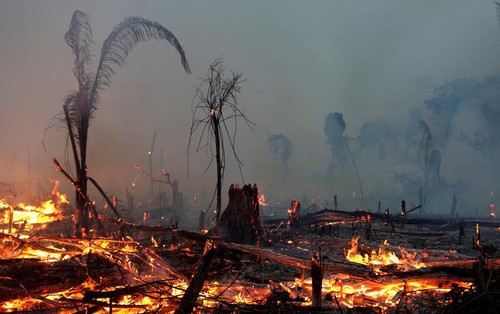
A historic drought in the Amazon has exacerbated the spread of fires. Many of the fires were attributed to human activity, but the drought created favorable conditions for them to spread quickly. As a result, 60% of Brazil is currently covered in smoke.
Including neighboring countries and the Atlantic Ocean, the area affected by the toxic cloud now covers 4 million square miles (10 million square kilometers) – an area larger than the entire United States.
Natalia Gil, an atmospheric science expert and air quality and emissions officer at the Uruguayan Technological Laboratory, told Live Science that there has been a progressive decline in air quality in cities in southern Brazil, northern Argentina, Bolivia, Paraguay and northeastern Uruguay.
In recent weeks, Gil has seen “significant increases” in black carbon, particulate matter, and gases such as ozone, nitrogen oxides, and carbon monoxide in cities as far away as Buenos Aires, Sao Paulo, Londrina, Rio de Janeiro, Cochabamba, and La Paz. In Uruguay’s capital, Montevideo, residents experienced days of poor visibility due to a thick smoke cloud and black rain — precipitation that is darkened by a mixture of ash and soot — recorded in many parts of the country. The same situation was seen in 11 Argentine provinces, including the Buenos Aires metropolitan area.
In Sao Paulo, the Pinheiros River has turned emerald green due to algae blooms caused by severe drought. Paulo Saldiva, a pathologist and professor at the University of Sao Paulo School of Medicine, compared the smoke from biomass burning to cigarette smoke, noting that both contain toxic substances that enter the body through the eyes, airways, and lungs. For example, in a metropolis like Sao Paulo, the level of pollution from vehicles and industry is equivalent to smoking four to five cigarettes a day. But for those exposed to wildfire smoke over long periods of time, the impact is akin to “lighting one cigarette after another,” Saldiva said.
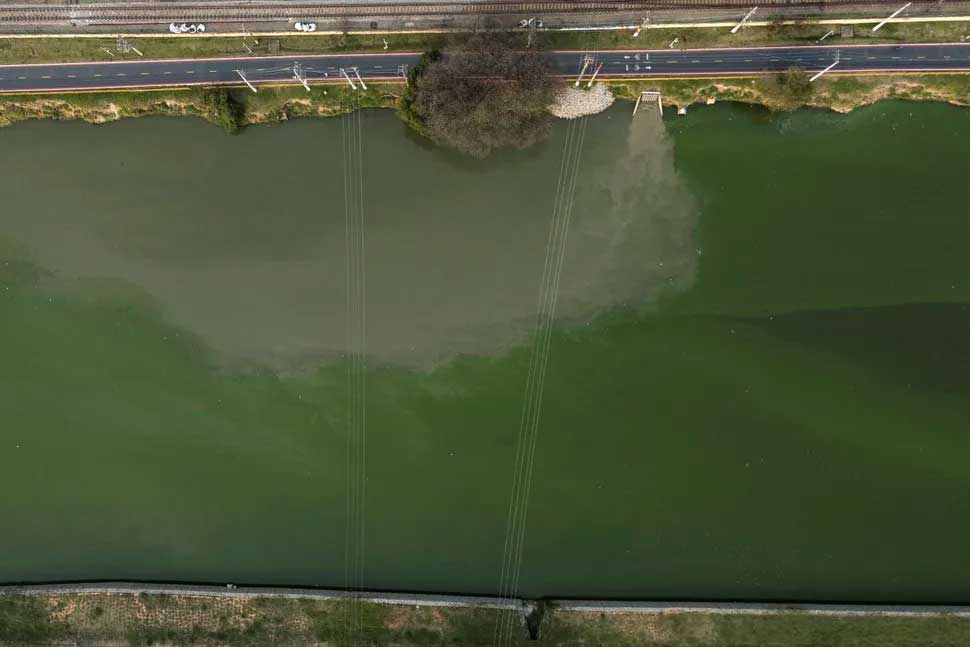
Algae pollution in Sao Paulo’s Pinheiros River turned the water green in September. CARLOS FABAL/AFP
Environmental changes in recent decades, as well as changes in land use, have significantly altered fire patterns. Although Brazil has always had dry seasons, the average number of consecutive days without rain has increased from 80 to 100 in the last decade, indicating worsening climate-related impacts, Fidelis said. “The forest is more susceptible to fires, even if deforestation rates have decreased. It has become more flammable,” Fidelis said.
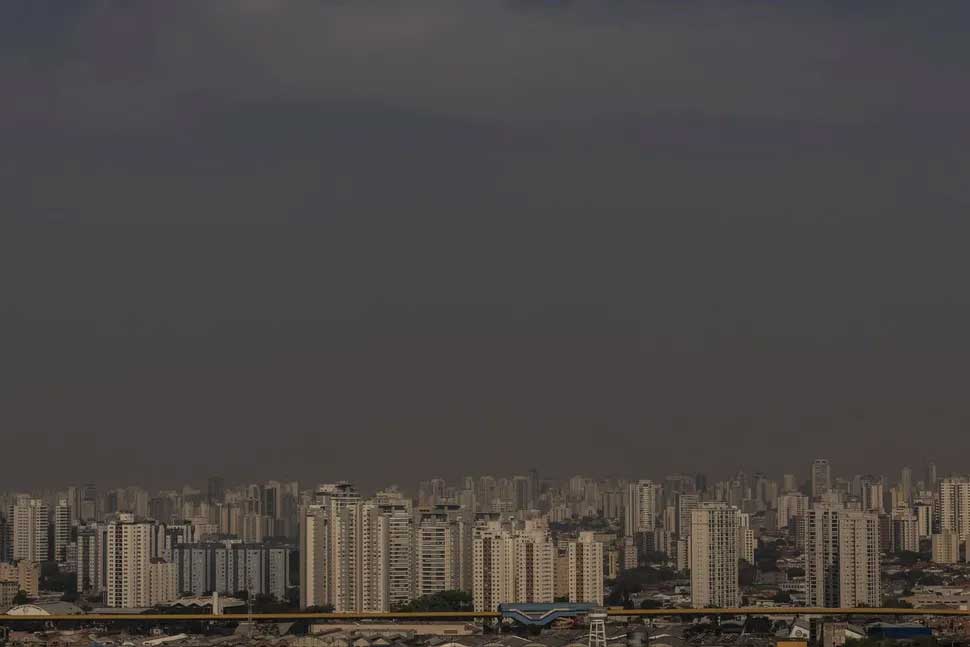
Air pollution over Sao Paulo on September 11. Fabio Vieira/FotoRua/NurPhoto
Luis Lopez-Marcico, a researcher at the Institute of Ecology and Environmental Sciences at the University of the Republic of Uruguay, told Live Science that in addition to changes in precipitation, the timing, size, duration, frequency, and intensity of fires can be affected by increases in temperature, soil moisture, and carbon dioxide levels.
Across much of Brazil, these changes are manifested in rising temperatures, decreasing rainfall and, most noticeably, an increase in extreme droughts that prolong the so-called “fire seasons.”
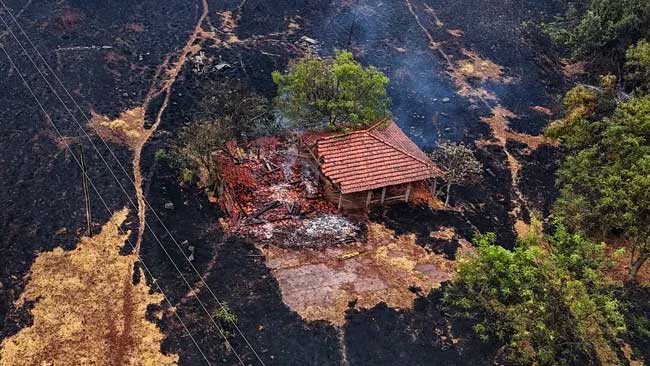
A house destroyed by fire in Sao Paulo state, Brazil, August 25, 2024. CARLOS FABAL/AFP
All of this constitutes a “new normal,” Fidelis said. “We need to start recognizing that we are dealing with a new factor that we once thought was a future scenario, but which has now become our reality: climate change,” she said.
In the Bryansk region, as in most regions of Central Russia, there is an abnormal drought. The last time it rained in the region was a month ago, the average air temperature is 5° above the climatic norm, and not a drop of water fell from the sky in September. Due to the abnormal drought and heat, the region is in an extreme fire hazard class.
The situation is aggravated by a strong south-easterly and easterly wind, with gusts reaching 12–14 m/s. Some weather stations in neighboring Belarus are recording haze with visibility reduced to several kilometers; according to residents of the village of Belaya Berezka, visibility in the smoke from forest fires, especially in the calm hours before dawn, is reduced to several hundred meters, indicating an extremely high concentration of harmful impurities in the atmosphere – people are literally suffocating, their throats are sore, the smoke situation is worse than in the worst year of 2010.
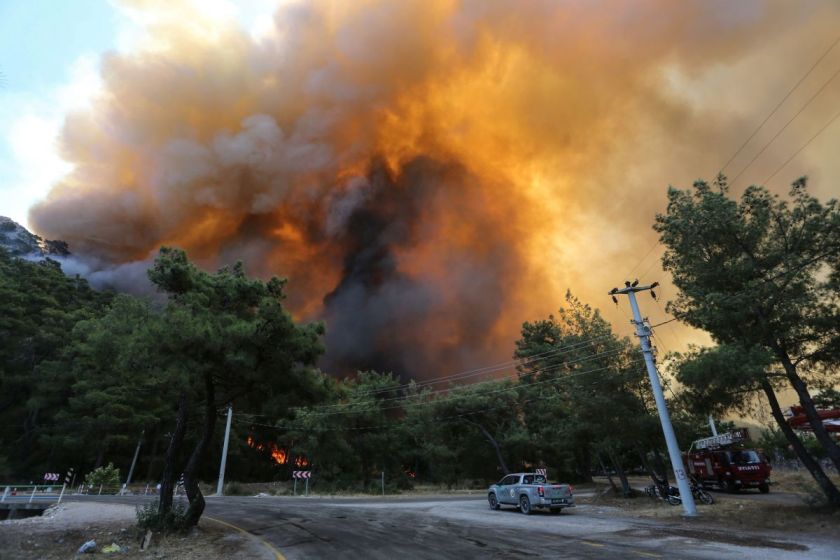
The map of thermal spots shows that the main centers of forest fires are concentrated along the state border, which indicates an anthropogenic factor in the occurrence of fires (intentional arson, military actions, criminal negligence, etc.). Air currents carry smoke from forest fires in the lower boundary layer of the atmosphere in the latitudinal direction from east to west (Bryansk region – towards Belarus) and until the middle of the coming week the wind direction will not change, and the reversal of the flows to the northern points will occur only from Thursday, September 19, and the smoke will be blown towards Ukraine.
Due to the anticyclone, the Bryansk region will remain very warm (+22…+27°) and dry for the entire coming week, which means that the heavenly office will not help firefighters in the fight against the elements. The fire hazard situation will only worsen, the geography of the fire will expand, the concentration of smoke will increase, if serious measures are not taken to strengthen fire brigades in the fight against the fire element.




